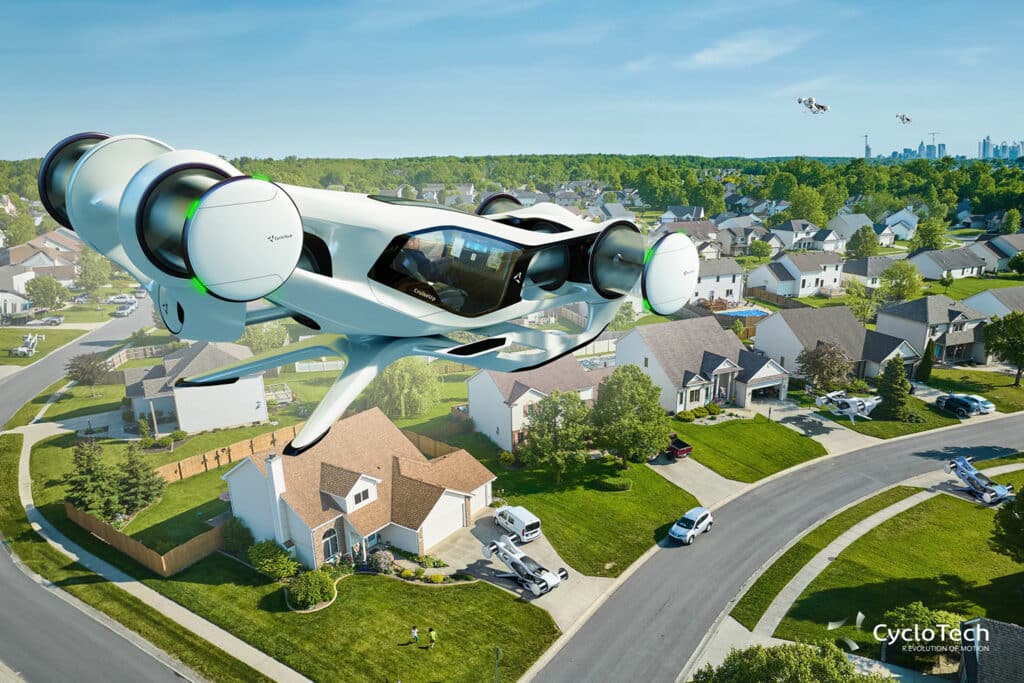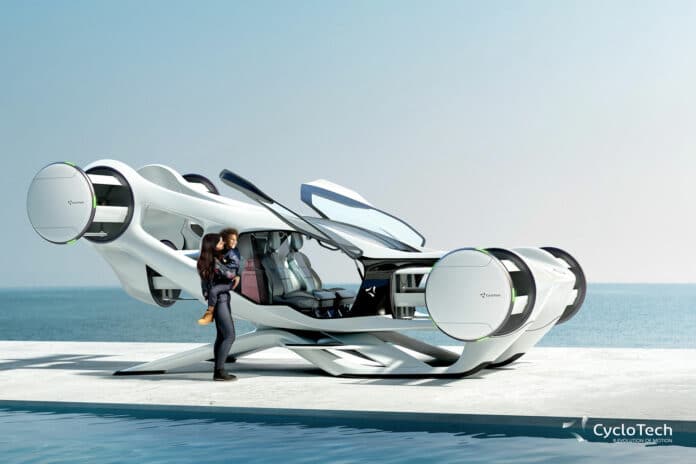Austrian startup CycloTech has unveiled CruiseUp, an innovative air vehicle that showcases the benefits of CycloRotor technology and its 360-degree thrust vectoring capabilities, all within a compact, passenger-oriented design.
Drawing on 15 years of technology development, extensive wind tunnel testing, and experience from over 500 flights of its technology demonstrator, the CruiseUp concept is designed to meet the individual air mobility needs expected to emerge in the coming decade. The vehicle promises to unlock new possibilities for everyday activities, enabling comfortable, simple, and safe transportation while also promoting sustainability by replacing pollution-intensive ground-based transportation.
CruiseUp uses CycloRotors as its electric propulsion system. This system is unique because it encapsulates the moving parts, providing an extra layer of safety for both the environment and the two passengers.
The air car has six CycloRotors, which makes it highly redundant and able to fly and land safely even if one of the rotors fails. Additionally, the specific configuration of the rotors allows for high-precision sideways and backward flight and mid-air braking without the need to tilt or bank the vehicle.

With its emphasis on maximum comfort, high maneuverability, and a seamless transition from hover to forward flight, CruiseUp offers an outstanding passenger travel experience. It leverages CycloRotors and their unique 360-degree thrust vectoring capabilities, which decouples the flight path from the vehicle attitude and compensates for gusts in harsh weather conditions. This allows passengers to travel comfortably within urban, suburban, and rural areas.
Moreover, CruiseUp can attain a top speed of 150km/h (93 mph) and has a range of 100 km (62 miles), making most megacities and their suburbs easily accessible, as they are within a 20 km radius.
The first wave of electric flying VTOL vehicles, featuring air taxis and air shuttles, is expected to enter commercial operation next year. This will introduce short-range electric flying to mankind, mostly in airline style, piloted, and as shared service within a pre-defined network of fixed locations.
However, CycloTech predicts that the second wave of sustainable electric flying will emerge a decade later when individual air mobility with privately owned eVTOL vehicles will begin to satisfy the ultimate customer expectation – true point-to-point transportation capability at one’s own disposal.
“With the dimensions of 6.7m x 3.3m, CruiseUp is just 50% bigger than current cars and way smaller than most of the air taxi concepts and thus fits into our domestic environment,” says project manager Andrea Marchsteiner. While the 20th century taught mankind to fly with fossil fuels, the 21st century will see emission-free “Flying Cars/Air Cars” become part of a new normality.
